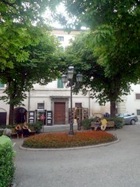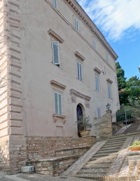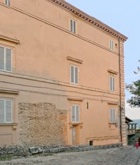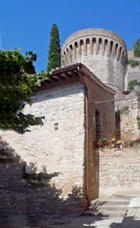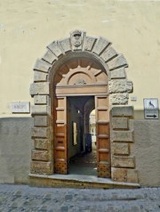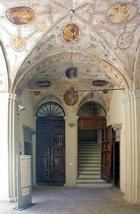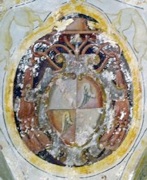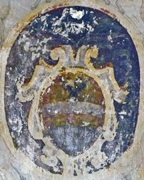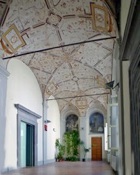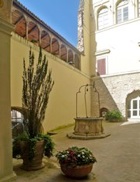Palazzo Diamantis (1589-1601)
Jacopo Antonio Diamantis commissioned this palace in 1589 from the Lombard masters
Battista,
Giacomo and
Marco di Bernardino da Como, who were resident in Spello. He died before its completion in 1601, by which time it belonged to two of his female heirs, Cleophe and Adria. It passed to the Ciofi family of Assisi in 1786 and to the Accorimboni family in 1794. It was split up in 1880 but subsequently returned to single ownership, and passed to the Antonelli Franceschini family in 1907.
The palace was opened to the public during the Festa a Palazzo in 2009.
Palazzo Venanzi Preziosi (1602)
The Venanzi family built this palace in Via Torre Belvedere, possibly as a replacement for their earlier palace in Via Consolare (see
Walk I). The family became extinct in the late 17th century. The local scholar, Giovanni Bianconi was among later owners, and it now belongs to the Preziosi family.
The remains of a Roman structure on the site are embedded in the wall along Via Torre Belvedere.
The palace stands in a large walled garden that was probably originally part of
Rocca Albornoz. A circular tower in the wall that supports the garden terrace probably survives from the fortress. (This photograph is taken from Piazza Foglie (see Walk II)
A stone with an Umbrian inscription (3rd century BC) was used in 1956 on the inside of the right upright of the gate of Palazzo Preziosi: the inscription reads “[...]flam[...]”, which could refer to Via Flaminia.
Palazzo Urbani (ca. 1605)
The Urbani family built this palace (together with another residence, now called Villa Fidelia). The work was complete by 1605. The palace passed in succession to the Monaldi (1620), Grillo-Pamphili (1718) and Cruciani (1769) families. It was sold to the nearby Collegio Vitale Rosi in 1940. It passed to the Commune in 1972, when it was restored and adapted to provide the municipal offices of the town, which moved here from Palazzo Comunale Vecchio.
The frescoes (1602) in the vaults of the atrium include copies of the woodcuts of personifications of the virtues and vices from the “
Iconologia” (1603) by Cesare Ripa.
The arms in these frescoes belong to Cardinal Boniface Bevilacqua, the Papal Governor of Perugia in 1600, and Piermarino Venanzi, Abbot of San Silvestro.
The stairs to the right lead to a landing with similar but less complex frescoes (1602).
The ground floor atrium leads to the inner courtyard, with a wooden loggia to the left.
This loggia looks down on an outer courtyard, which can be seen from from Via della Catena.
